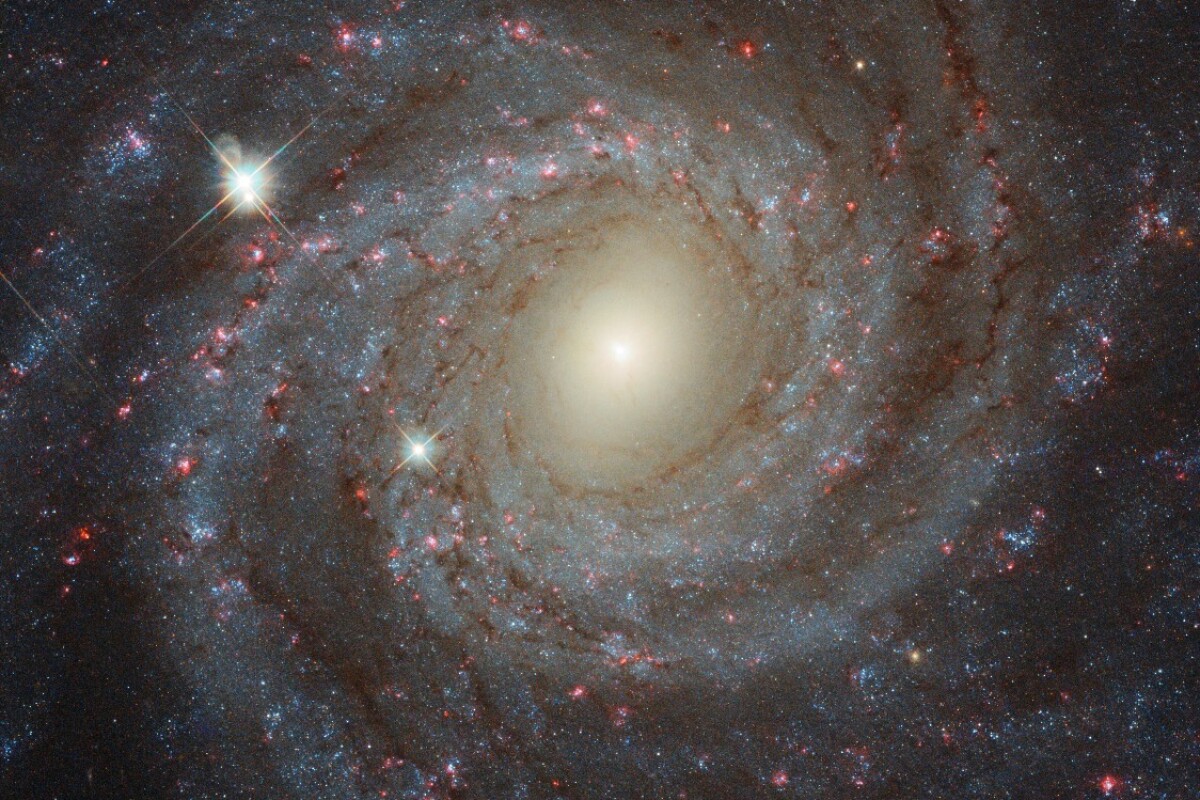The Hubble Space Telescope has captured a stunningly detailed view of the weakly barred spiral galaxy NGC 3344, which is located some 20 million light-years away in the direction of the "Lion Cub" constellation, Leo Minor. NGC 3344 is roughly half the size of our own Milky Way galaxy, and belongs to a relatively small spur of galaxies associated with the Virgo Supercluster, which is composed of several thousand of the vast cosmic structures.
Spiral galaxies are often the subjects of the most strikingly beautiful and iconic celestial photography. This is partly due to the fact that the Milky Way is itself a spiral galaxy, in which Earth is located roughly half way up a one of the minor spiral arms known as the Orion Spur.
By observing these wandering giants, astronomers can learn a great deal not only about neighboring galaxies, but also about how our own came to form and evolve, and the fate that awaits it billions of years in the future.
The focus of the latest Hubble release, NGC 3344, is one such galaxy. Like our own Milky Way, it exhibits a complex spiral pattern, and through its heart, a lane of stars referred to as the central bar.

Astronomers estimate that roughly two thirds of all spiral galaxies play host to a central bar, but not all of these features are created equal. If you were able to view the Milky Way from afar, the bright bar of our home galaxy would be clearly distinguishable passing through its heart. NGC 3344, however, is designated as a weakly barred spiral galaxy, with its central feature appearing as little more than an elongated bloom shining from the core of the leviathan structure.
The new release is a composite image created from Hubble observations captured on March 1, 2015. The venerated space telescope imaged NGC 3344 with its Wide Field Camera 3, using a range of filters that allowed it to capture not only visible light, but also wavelengths of the electromagnetic spectrum that are invisible to the human eye, including that of near-infrared and ultraviolet radiation.
Observations made by Hubble in these otherwise "invisible" wavelengths have been colorized in order to create a more complete depiction of the intricate and beautiful spiral galaxy, resulting in a view that surpasses anything that we could hope to see with the limited capabilities of the naked eye.

The spiral arms of NGC 3344 are punctuated with the fierce blue light shining from super-hot, newly born stars. The vast, filament-like clouds of dust and gas that will serve as the material from which the next generation of stellar bodies will coalesce, is represented in a dark red color, threaded throughout the image.
Astronomers have identified a population of stars in NGC 3344 that are moving in an irregular way relative to the majority of the stellar bodies that make up the galaxy. One theory put forward to account for the strange motions, is that these stellar bodies initially belonged to another neighboring galaxy, and were transferred from their original home by the gravitational influence of NGC 3344 following a close proximity pass that occurred in the distant past.
The concept of one galaxy stealing material from another is by no means a new one. These close encounters and galactic mergers are surprisingly commonplace, and could even be an important factor in the evolution of some spiral galaxies.
Scroll down to see a video zooming in on NGC 3344 from the perspective of Earth.
Source: Hubble Space Telescope






